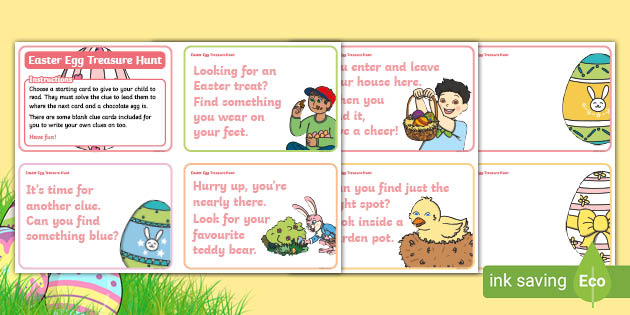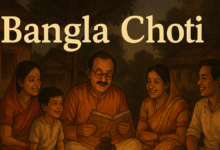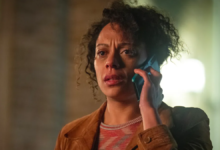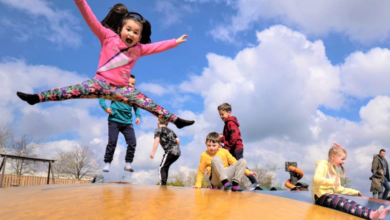Ultimate Guide to Easter Egg Hunt Clues

When it comes to Easter egg hunts, one of the best ways to elevate the excitement is by adding some creative, tricky, and fun Easter egg hunt clues. Whether you’re organizing the hunt for children or adults, adding clues can make the entire event more engaging and memorable. Clues give participants a challenge, allowing them to solve puzzles while hunting for those colorful hidden treasures. But how do you craft the perfect clues that are just difficult enough to spark curiosity and fun without being overly frustrating? In this guide, we’ll dive into the best tips and strategies to help you create Easter egg hunt clues that are sure to keep everyone on their toes.
Why Easter Egg Hunt Clues Are Essential
Easter egg hunts are a beloved tradition, especially for families. The thrill of searching for hidden eggs and the joy of finding them is something that never gets old. But after a few rounds, the novelty of simply “looking around” can wear off. That’s where Easter egg hunt clues come in. They bring an element of mystery and problem-solving to the hunt, making it feel like an exciting adventure.
By using clues, you turn a basic treasure hunt into an interactive, brain-teasing game that can span a wide range of locations—be it in the backyard, inside the house, or even around the neighborhood. The best clues encourage collaboration, thinking outside the box, and, of course, a good laugh or two.
Types of Easter Egg Hunt Clues

There are various types of clues you can use for your Easter egg hunt. Depending on the age group and the difficulty level, you might want to opt for different types of clues. Below are some of the most popular ones:
Riddles and Rhymes
One of the most common types of clues for Easter egg hunts are riddles and rhymes. They add a layer of fun and whimsy to the game, making it more challenging and interactive. For example, a simple riddle like, “I’m not a bird, but I can fly, hidden under the sky. Where am I?” could lead participants to look for an egg near a kite or something that represents flight.
These kinds of clues are great for kids because they encourage critical thinking and creativity. Depending on the complexity of the riddle, you can adjust the difficulty to suit the age group.
Picture Clues
For younger children, picture clues can be very effective. These can be simple drawings or even printed images that point the hunters in the right direction. For example, a picture of a tree could indicate that the next egg is hidden under or near a tree in the yard. This method can be especially useful for younger kids who may not yet be able to read or solve riddles easily.
Picture clues also add a visual component to the hunt, making it more engaging for children who enjoy interactive play.
Directional Clues
Another fun way to build excitement is through directional clues. These clues tell participants where to go, such as, “Look left of the swing, and you will find what you seek” or “Go to the dark corner where the shadows creep.” Directional clues work well in a larger, outdoor setting, where you can hide the eggs in multiple locations and want participants to navigate through a specific route.
Directional clues are versatile, and you can get really creative with them. Consider using references to specific items in your yard, such as garden gnomes or outdoor furniture, to guide hunters.
How to Write Easter Egg Hunt Clues for Different Age Groups
Creating clues that work for different age groups is essential to ensure that everyone enjoys the hunt. Easter Egg Hunt Clues A clue that’s too difficult for a child will frustrate them, while one that’s too easy won’t provide the challenge that adults or older kids are looking for.
For Young Children (Ages 3-5)
For younger children, the key is to keep things simple and visual. Use basic clues that are easy to interpret, like:
- “Look where the flowers grow, under the soil you go.”
- “I’m in the fridge, beside the butter. Go ahead and open the door and make sure you don’t stutter!”
It’s important to avoid abstract or tricky clues and stick to things they’re familiar with. Incorporating their favorite toys, characters, or items they know will keep them engaged.
For Older Children (Ages 6-12)
As children get older, you can start introducing more complex riddles or wordplay into your clues. At this stage, the clues can be a little trickier but still fun. Try using rhyming couplets or adding layers to the riddle.
- “In the room where you rest your head, look near the place where you are led.”
- “I’m with the plants, but I don’t need to be watered. My home is where the soil is unbothered.”
You can also start to introduce hints that require them to think in a more creative way, like color-coded clues or clues involving basic math or spelling.
For Teenagers and Adults
For teens and adults, you can really get creative. Riddles can become more challenging, and you can even incorporate puzzles, ciphers, or puzzles that require problem-solving skills. Easter Egg Hunt Clues Complex riddles or cryptic clues that refer to abstract ideas or require multiple steps to solve will keep them thinking for longer.
- “Under the stars, you will find me, next to the bench where the books lie free.”
- “I’m where you go when it rains; I provide cover, but you must guess the right one among the others.”
Using a mix of riddles, wordplay, and clues that require a bit of physical searching can turn the hunt into a thrilling adventure.
Creative Ways to Use Easter Egg Hunt Clues

Here are some fun, unique ways to incorporate clues into your Easter egg hunt:
Treasure Map Clue
A treasure map adds an old-school pirate feel to the hunt. Draw a simple map of your yard, house, or specific area where you are hiding eggs. Easter Egg Hunt Clues Mark the starting point and draw X’s to show the locations of hidden eggs. You can also use symbols or landmarks to represent locations, like a tree, bench, or sandbox.
This type of clue adds excitement and makes the search feel like an epic treasure hunt, especially when combined with other clue types.
Puzzle Pieces
Instead of giving clues directly, you can hide puzzle pieces and have participants work together to assemble the puzzle. Once completed, the puzzle will reveal the final clue or location where the next egg is hidden. Easter Egg Hunt Clues This type of clue encourages teamwork and problem-solving, which is especially enjoyable for older kids or adults.
Color-Coded Clues
For added difficulty, you can create color-coded clues that match the colors of the eggs. For example, a blue clue could lead to a blue egg, while a green clue might lead to a green one. To make it more challenging, you could have multiple colors to work with, requiring the hunters to match each clue to its corresponding egg.
FAQ About Easter Egg Hunt Clues
What type of clues are best for young kids?
For young kids, picture clues and simple rhyming riddles work best. These clues should be easy to understand and should refer to familiar objects or locations like a tree, swing, or a favorite toy. Avoid abstract clues as they may confuse younger children.
Can Easter egg hunt clues be used for both indoor and outdoor hunts?
Yes! Easter egg hunt clues can be used for both indoor and outdoor hunts. The key is to adjust the complexity of the clues based on the location. For indoor hunts, you might want to keep clues more localized (such as referencing furniture or specific rooms). For outdoor hunts, you can incorporate larger landmarks or items in your yard.
How do I make clues more challenging for older kids?
For older kids, you can use more intricate wordplay, riddles, and references that require a bit more thinking. You can also include ciphers, codes, or puzzles that must be solved before moving to the next clue. The more interactive and complex the clue, the more enjoyable it will be for older kids.
How do I prevent cheating during the Easter egg hunt?
To prevent cheating, make sure the clues are challenging enough that everyone has to search for the eggs thoroughly. You can also designate specific areas or rooms for each participant or group to ensure everyone has an equal opportunity to find eggs.
This guide should give you a strong foundation for creating Easter egg hunt clues that will entertain and challenge your participants. Whether you’re hosting a hunt for kids or adults, these tips will ensure that your Easter egg hunt is a memorable and enjoyable event. Happy hunting!





